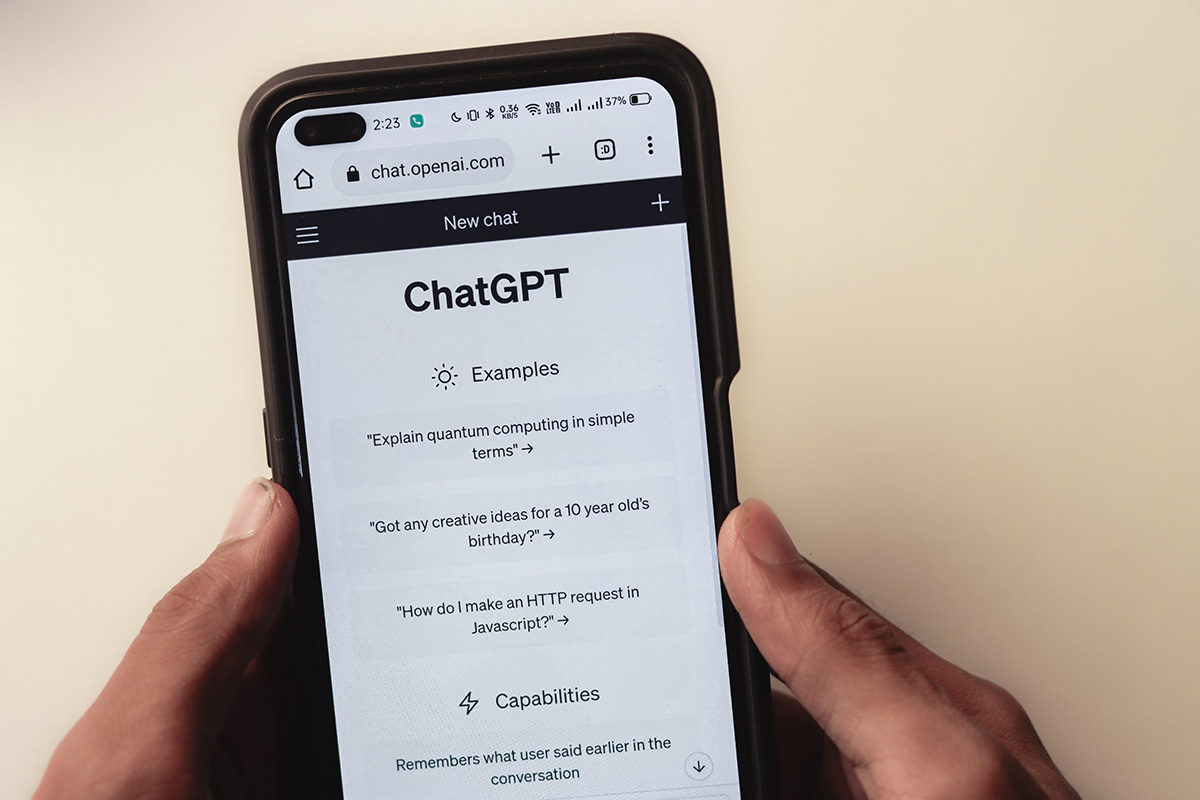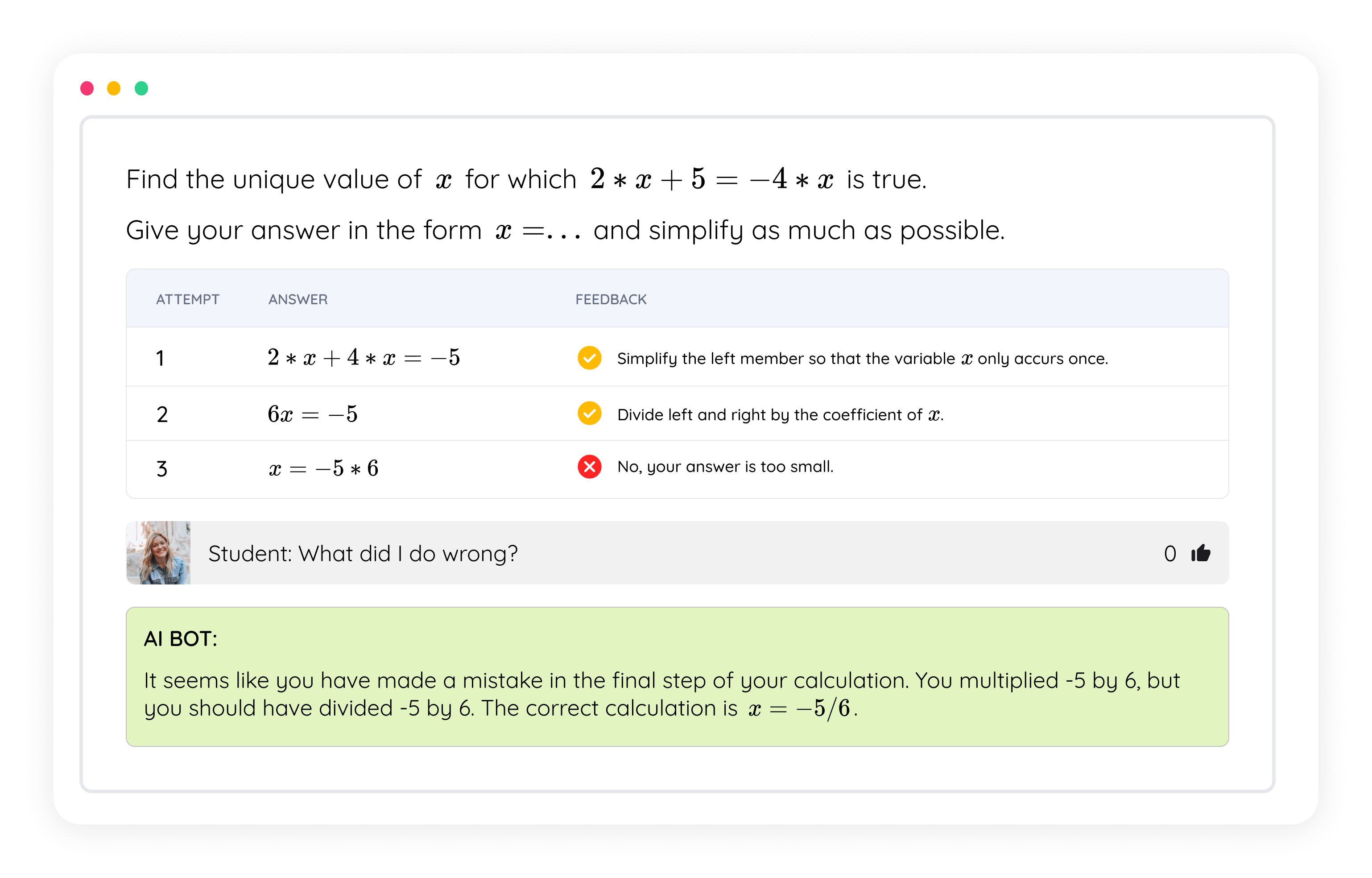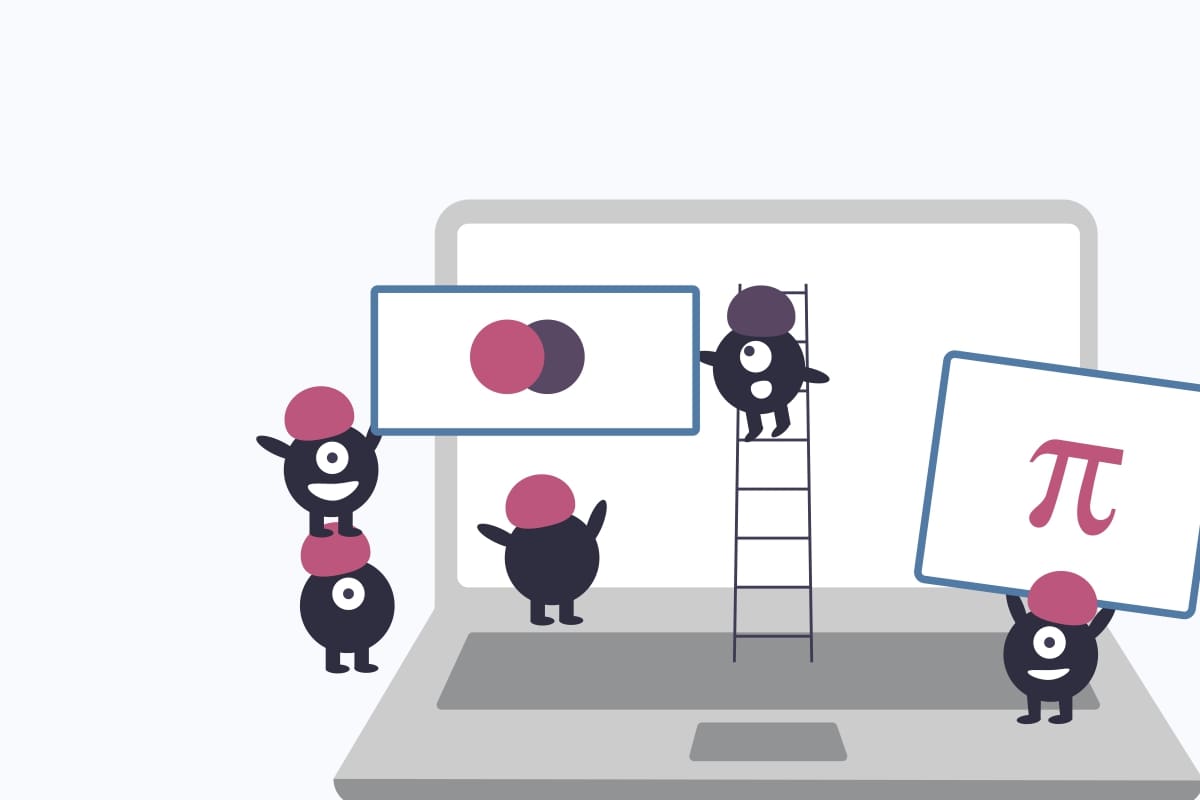The use of artificial intelligence is transforming teaching and learning in higher education. AI tools have various benefits, such as providing advanced data-driven insights, improving teacher and student performance, and fostering creative ideas. However, using AI in higher ed also raises multiple concerns. This mixed reaction toward a new technology is not a new story, as those who lived through the first years of the internet will remember.
While AI can assist educators nurture students and provide them with the math skills necessary in today’s world, this technology also involves challenges like ensuring its accuracy and dependability, reducing any biases, finding a balance between automation and human involvement, and using it ethically (Rane, 2023).
Educators face the collective challenge of rethinking how to apply AI in education. As with other technology tools, instead of adopting AI products for their own sake or banning them directly, we need clear goals and a pedagogical ground that sustains them as we are aware of their limitations and potential perils.
The use of AI in math education does not have to replace something that already exists. We can use AI tools and our creativity to improve teaching and learning from a human-centered perspective. Many education tasks could be good candidates for automation with AI, helping teachers make the most of their teaching time and dedicate their resources to more impactful activities.
In this blog post, we will focus on AI applications in higher ed math and illustrate one use of artificial intelligence in math education with Sowiso’s new AI chatbot.

Lo and Hew (2023) reviewed the literature about the potential of integrating AI-based chatbots into flipped learning. Following their review, this technology can have benefits to enhance students’ learning experience, such as increasing student interaction with learning content, improving class preparation, and offering data-driven teaching and learning. However, this tool can also present potential challenges like limited technical functionality and lack of authenticity (which can be optimized by the designers of these chatbots). Educators and edtech providers can work together to improve these features and maximize their potential.
AI chatbots can offer endless possibilities for math instruction in higher education. They can provide extra support to students instantaneously at any time. This can be extremely useful when teachers are unavailable and when students have difficulty asking questions (e.g., if they feel too shy to ask for help). This tutoring feature can reduce the gap between people with access to personal private tutors and those without it.
As Gupta and Chen (2022) found, chatbots can foster an inclusive online environment, further supporting disadvantaged students and catering to diverse life environments and learning styles. Moreover, this extra support can be obtained in an accessible, interactive, and confidential manner.
At Sowiso, we are committed to saving teachers time and providing students with extra guidance whenever they need it so they can learn at their rhythm. That’s why we have launched a new AI feature for math.
Our platform’s forum will be equipped with an AI math tutor. Solution Bot is trained to answer specific math questions related to Sowiso exercises. The AI is designed to mimic the interaction between a student and a tutor. It gives constructive and detailed feedback to motivate learners while guiding them towards the correct answers.
Solution Bot is always ready to reply immediately to questions like “Can you give me more examples of applications of this theorem?” “What’s wrong with my answer?” and “Why is that the right solution?” This chatbot will only reply to questions related to mathematics and will always do so in a friendly and constructive tone. Our bot’s solutions are concise and accurate. In this video, you can watch a short demo of how our Solution Bot works.
This AI math tool can act as a reliable extra moderator, unburdening teachers and empowering them to use their time for more impactful mathematics teaching tasks, like explaining the most complex topics, creating customized materials, or having more personal contact with students.
Some of our university partners have already piloted this feature, and we are thrilled to share that we have obtained great feedback from these pilots.
Recently, we hosted a webinar with OpenStax (Rice University), during which we discussed the potential of AI for math education and showcased our new AI chatbot with guest speakers from Radboud University.
Dr. Jana Vyrastekova and Dr. Gabriela Contreras shared their teaching experience with Solution Bot in their math classroom. Both have been actively using Sowiso for years, and they tried our AI feature as an assistant. They used it as a study buddy in a math course for economics to help students practice on this platform.
Their main goal was to help students get explanations of the right approach and required steps to solve and exercise (e.g., can you explain why we have to do this calculation?). As Jana explained:
“We tested the chatbot prior to offering it to the students, and we felt there was a lot of potential to explain the extra context in which students are answering the questions. We were positively surprised by the chatbot’s performance. That’s why we confidently chose to start this pilot and were really open to the contributions the chatbot could have to the students’ learning.
We were really happy to see this chatbot was programmed to be a safe learning environment for students. We are all at the start of this experience, and we are thrilled that this pilot is opening to a more constructive attitude toward what AI can mean for students’ learning. We are at the beginning of this journey, and it’s great to collaborate with Sowiso to learn together and see how we can support students.”
This pilot originated a research study about the benefits of this AI tutor and how students use it. If you want to know more about their experience and future projects, you can also watch this OpenStax webinar.
Our colleagues have created videos to show additional innovative options for using our chatbot. You can explore how to use Solution Bot in engineering math and how to use it when applying math in business economics.
Our AI chatbot for math is now live for all Sowiso users. Please let us know if you want to try it or have any doubts.

Security should always be considered when evaluating whether to use AI tools in math education. At Sowiso, security is at the heart of all our operations. In our Solution Bot, the model integrated into Sowiso has access only to the exercise question, the hints (if available), the solution text, and the student’s question.
The model does not access private data or learning performance data from the student. Nevertheless, it is essential to inform students not to share private or personal information with the Solution Bot. It is also recommendatble to raise awareness among students about the implications of using AI. At Sowiso, any time students need to ask a question, they can choose whether they use Solution Bot or ask directly in the forum. Here, you learn more about how students experience our chatbot.
Do you have any doubts about AI in math education? If you want to ask us or try our new AI feature for math, get in touch with us. We are happy to discuss the possibilities that Sowiso can offer to your classroom or for research purposes. Our math education specialists are looking forward to replying to all your questions.

TU/e teachers face diverse challenges with a tough physics course. Learn how they solve them with a tailored approach + extra practice opportunities with Sowiso.

Discover how to use real-life math to engage students, plus a successful use case from Radboud University. This post sums up the takeaways from a webinar with OpenStax.

We hosted a webinar series updating our teachers about our most valuable features and how to use them. Watch the recordings and learn the main takeaways here.